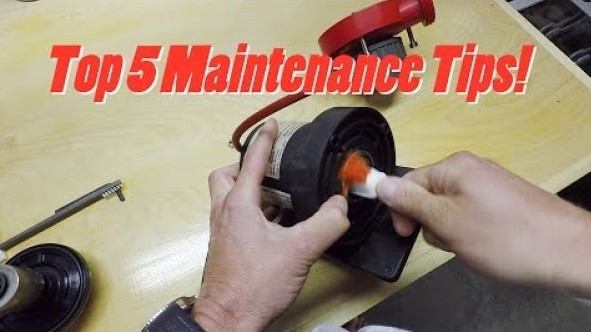The Top 5 Maintenance Tips and Chores from ReefBum
- Sep 12, 2019
- Web Aggrigator
- 894 0 0

We are going over ReefBum's top 5 reef tank maintenance tips and chores to prevent aquarium from going off the rails.
5 - Test Water Parameters
Every week ReefBum test Nitrate, Calcium, and Magnesium with Salifer test kits. I test Phosphates with a Milwaukee Mi412 low range meter. I use a GHL KH Director measures Alkalinity once a day, while my GHL Profilux 4 continuously monitors Temperature, pH, Redox, and Conductance.
It is also a good idea to do a Triton LAB ICP test every few months. The ICP test will make sure other key parameters are not out of wack.
[NOTE: Testing your parameters dose not require you to have high-end monitoring devices. If you had to choose a water parameter to test regularly, I would suggest testing Alkalinity. You can even use a cheap API Alkalinity Test Kit. Owning monitoring equipment can be expensive but will cut down on the required maintenance.]
4 - Keep Measuring Probes Clean
Allowing gunk, primarily calcium carbonate to build upon probes can result in an inaccurate reading. Bad data can result in bad decisions. ReefBum likes to clean his probes every few weeks.
3 - Re-Calibrate Probes
How bad data can equal bad decisions it is always good to calibrate your probes every few weeks.
[NOTE: Re-calibrating your equipment every couple of weeks may be too much of a chore for some hobbyist. Try to re-calibrate your probes once a quarter, twice a year or at a minimum once a year.]
2 - Clean Your Return Pumps
Every few months it is wise to clean your return pumps to keep them performing well and preventing them from seizing up. ReefBum takes his pump apart and then soaks it in a 50/50 solution of water and distilled white vinegar for 30 min. I then use a brush to scrub everything to remove any calcium carbonate build-ups.
[NOTE: This is a HUGE tip. Most people neglect their return pump and do not touch it until there is a problem with it. Performing regular maintenance on your return pump will extend the life of your pump and will make sure it is performing at its top performance.]
1 - Clean Peristaltic Dosing Pump Heads
Every few months it is good to disable the heads and clean the gunk off of the rollers that build up over time. Failure to do so, can cause the rollers to stick or rub up against the cover and in some cases freeze up the head and crack the cover. Not good if you are using the dosing pump to dose two-part solutions of Alkalinity and Calcium. A shift in parameters can easily stress out corals. It's always good to have a set of replacement heads available incase the heads are too far gone.
This is ReefBum's maintenance tip that he swears by to keep his reef aquarium in tip-top shape.






About author
The content found on this page was found and added by Tank Facts to make it easier to learn about new species and keeping all of the found content in one place. The brand and content is owned by the respected individuals and in no way considered Tank Fact